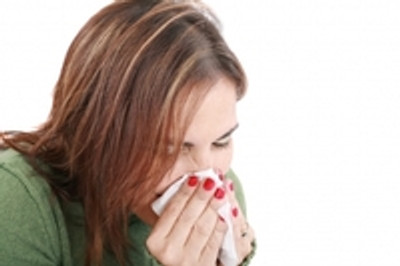Is Your Pillow Triggering Fall Allergies?
Bethaney Wallace on 3rd Sep 2014
Allergies are often considered to be a necessary evil. No matter the time of year or what season they’re letting us know is around the corner, they pop up, uninvited, to remind us just how quickly the weather is changing. (Or just how many unseen substances are hiding right within our breathing air – even inside of some of our favorite seasonal plants.) And then, because they have nothing better to do, these allergens cause us to itch, cough, sneeze, and eye water our way through the next several weeks. That is, until the next season comes along and the frenzy is started all over again.
We can take medicines, but that only works to mask the reaction our bodies create. Yet under the surface, the substances are still there, waiting to cause a scene just as soon as they’re given the opportunity. See how allergy control pillow cases can help.
Depending on how bad your allergies are, it doesn’t matter how many air purifiers you use, how hypoallergenic your sheets are, or how little time you spend out with Mother Nature. These triggers are still hiding away, and they will get you. But what if there were other contributing factors causing your symptoms as well? What about everyday objects harboring allergens right before our very eyes – such as your pillow. The very same surface you sleep on each and every night. If it’s more than a few years old – and made of the “wrong” types of materials – your pillow could actually be increasing your allergies each time you head to bed. Over time pillows can collect dust, bugs, skin cells, and other allergens that we simply can’t pinpoint. And considering you sleep on it for hours on end, it’s no wonder it leaves us as a sneezing, coughing mess.
How to Avoid Pillow-Induced Allergies
If your pillow is made from anything other than hypoallergenic material, it might be time for a new model. Certain feathers can attract microscopic germs, while others might create an allergy in and of themselves. Instead, opt for a pillow that specifically works to reduce sneezing, etc., or one that’s made of a supportive foam. While feathers or traditional stuffing will harbor allergens, foam is better equipped to fight off these substances rather than encourage their growth. Additions such as specialty pillowcases and sheets will also keep airborne triggers at bay.
Remember that opening a window – even with the use of an air purifier – can also invite pollen (and more) right onto your sleeping surface. While it might not be ideal to keep windows closed year-round, it’s a choice that’s better than suffering throughout your waking hours, as well as while sleeping. Another trigger takes place during traveling. Walking through airports or even driving in different towns will expose you and your pillow to new airborne items that can cause more severe allergic reactions.
Allergy-Free Pillows of Choice
If you’re a chronic sufferer, it might be a good idea to talk with your doctor about what sleeping materials will best eliminate your symptoms. Sleep store workers (including Contour Living) will also be a good source of information as to which pillows can provide the most relief. There might even be a specific chemical or spray that helps to reduce whatever it is that you’re the most allergic to.
As fall time allergies are on the rise, consider changing your nighttime sleeping routine to avoid all your ongoing triggers. Just by purchasing a new pillow – one of the most cost-friendly options available – you can work to greatly reduce sneezing, coughing, and more.

